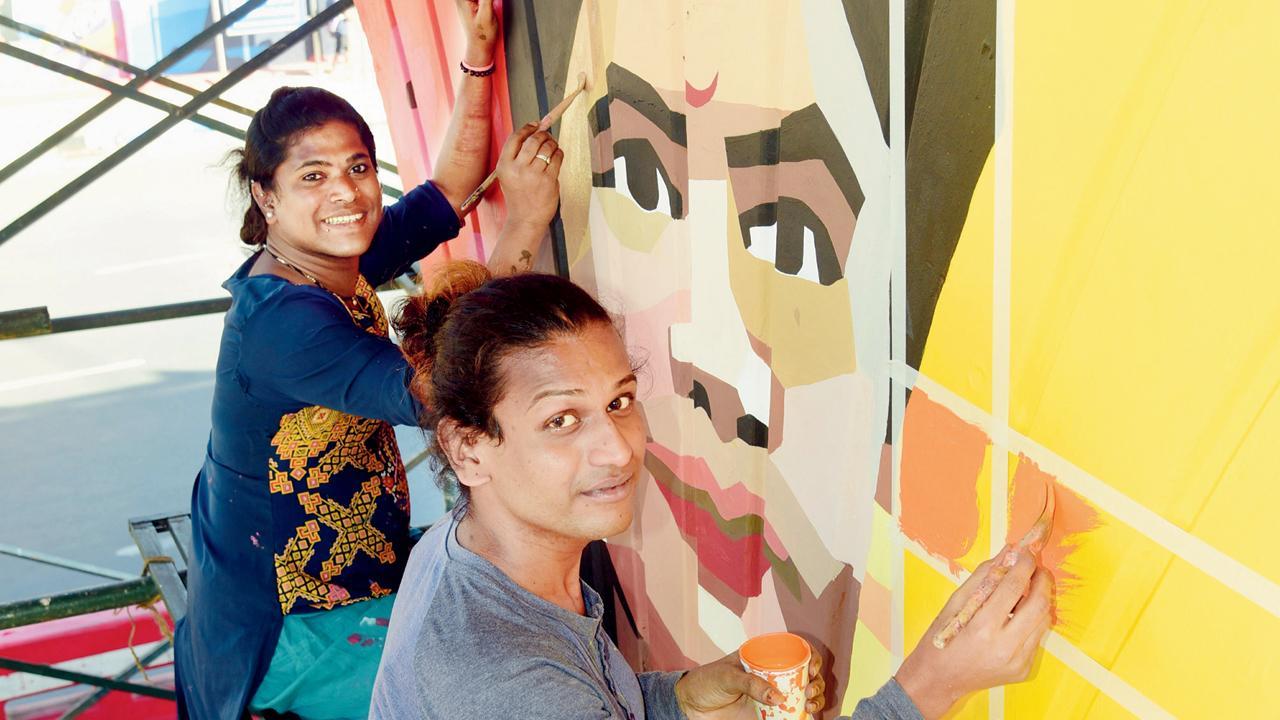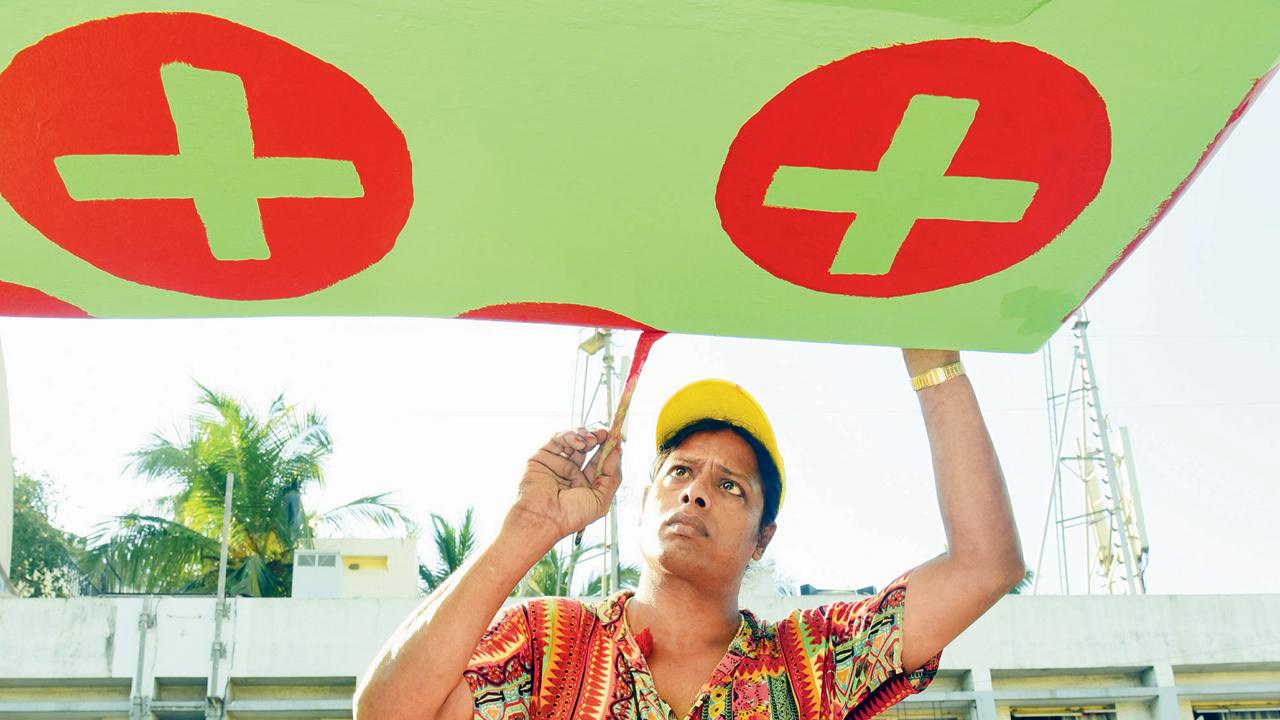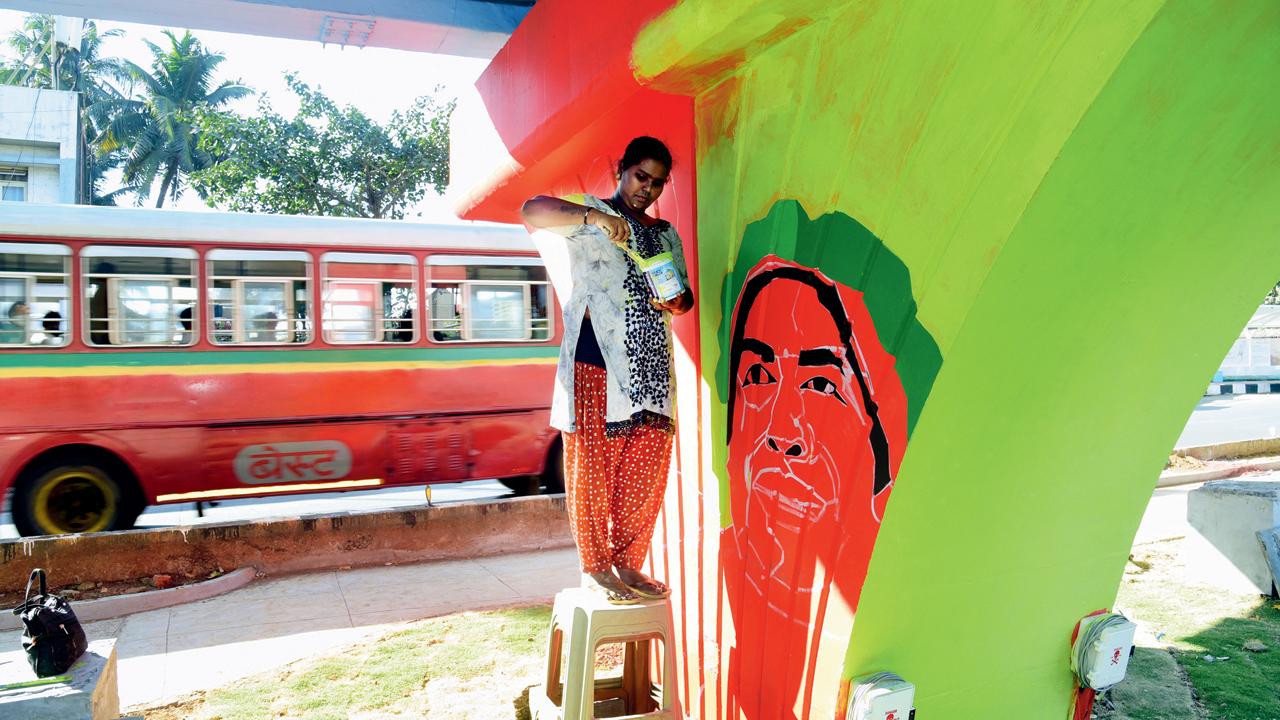BMC and MSRDC invite trans women to beautify the city; they paint dabbawalas, fisherwomen, kaali-peelis on Worli’s pillars

Artists Ayesh and Mona paint a portrait on a pillar of Love Grove flyover at Worli, on Thursday. Pics/Atul Kamble
If you happen to cross Worli, you are most likely to see a group of trans women dedicatedly painting the pillars of Love Grove flyover. They have been roped in by the authorities to add a splash of colours to the concrete jungle of Mumbai. The BMC, the MSRDC (Maharashtra State Road Development Corporation) and St+art India have jointly undertaken the art and road beautification project. It was St+art India that came up with the idea of commissioning the activity to Aravani, an organisation that gives space to trans women to showcase their creativity through art. On the Worli Naka-bound stretch, 14 pillars will be painted by a group of 10 trans women, who start at 10 am and finish only by 6.30 pm.
ADVERTISEMENT
Sadhna Prasad, Aravani co-founder and art director for this project, said, “The idea was to give these trans women a chance to exhibit their artistic skills, and at the same time make public spaces safe for them. All of them are trained in their work. It was my co-founder Poornima who came up with the idea of working with trans women and on the issues faced by them. We have a group of about 40 trans women across India who work with us part-time on project basis. We painted the walls on this road last year and our work was appreciated and we started getting noticed. This year, the government agencies commissioned the pillars as well.”

Artist Vicky Shinde at work
The project gets over by February 24. Prasad said they don’t have any fixed options for a sustainable income. Some of them are hairstylists, mehendi artisans, beauticians and some even shoot for documentaries and films. Sumit Gupta, site coordinator of St+art India, said, “Transgender people do not have many options, but this is one way to ensure they don’t beg at traffic signals. We have conducted workshops so that they are trained and are willing to work. The government has been supportive and encourages trans women by assigning projects and opportunities like these. The walls and pillars depict themes synonymous with Mumbai—dabbawalas, fisherwomen, kaali-peelis.”
‘Projects get us respect, end bias’
Vicky Shinde, a trans woman and transgender rights activist, said, “I have learned cooking, painting and am also an actor. So once this project is over, I have other options and can get back to earning my income using the skills I possess. I also get others from the community engaged in projects or part-time gigs. Many of us had skills but no platform to showcase our work. This project has given us both an opportunity and a source of income, and people also show respect for the work we are doing. Such works are also helping erase the bias. We just want the society to have a liberal approach towards trans women, who they think only beg, engage in sex work or dance at occasions. Art work gives us a new identity as painters and artists.”

Artist Deepa paints a pillar green
“We want to be recognised and have full-time jobs but will companies employ us and the colleagues accept us?” she asked. Another artist involved in the project, Mona Worlikar, 24, said, “I am not trained in art, but was always creative and took up this chance to put my skills to use. I have worked on similar projects previously, and feel happy every time I get another opportunity as it gives me a chance to learn something new.”
“I was a background dancer, but I’m currently unemployed. So these projects help me cope with financial strains. I would urge the BMC to employ more trans women, because those without work are begging. If the government won’t recognise us and give us work, then what will we do,” asked Worlikar, whose widowed mother works as a house help. Sharad Ughade, assistant municipal commissioner of G south Ward (Lower Parel and Worli), was unavailable for comment.
14
No. of pillars currently being painted
 Subscribe today by clicking the link and stay updated with the latest news!" Click here!
Subscribe today by clicking the link and stay updated with the latest news!" Click here!







